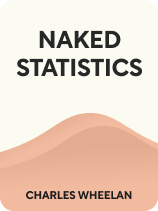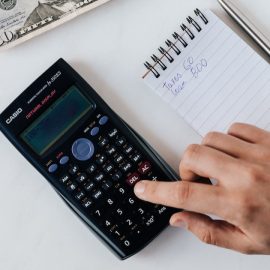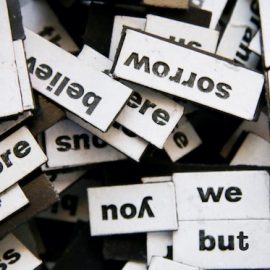

This article is an excerpt from the Shortform book guide to "Naked Statistics" by Charles Wheelan. Shortform has the world's best summaries and analyses of books you should be reading.
Like this article? Sign up for a free trial here .
What exactly is probability? How can mathematical probability help us in real life?
Probability is a mathematical ratio that communicates the likelihood of a particular event over all other possible outcomes. It allows us to manage uncertainty by measuring risks and putting possible outcomes in perspective.
In this article, we’ll discuss some real-life applications of probability.
Using Probability to Make Financial Decisions
Financial decisions are one of the most noteworthy real-life applications of probability: Investors use probability to assess financial risk all the time. Wheelan explains that a statistic called the “expected value” can help us determine whether we want to take a financial risk when we know the probability of each possible outcome and its respective payoff. To calculate the expected value of a financial investment (risk), we multiply the financial payoff for each possible outcome by its probability and then add them all together.
For example, say you were interested in building a tiny house on your property to rent to tourists. It will cost $50,000 to build the house. Based on location and current market demand, you estimate a 25% chance that the house won’t be rented at all during the first two years, a 50% chance that it will be rented “part-time” and earn $1,500/month, and a 25% chance that it will be in high demand and rented “full time,” earning $3,000/month. To calculate the expected value of the investment during your first two years, you would multiply $0 by 25%, $36,000 (for two years of part-time rentals) by 50%, and $72,000 (for two years of full-time rentals) by 25%, and add them together for an expected value of $36,000.
Wheelan explains that we can represent the calculations for the expected payoff visually in a decision tree. For your tiny house, your decision tree would look like this:
Again, probability dictates that your investment is likely worth $36,000 in the first two years. But looking at your decision tree, you can also see that it’s reasonably likely that you’ll make no money at all and also reasonably likely that you’ll only make $18,000.
The decision tree highlights an important lesson in probability: Probability is a tool, not a guarantee. Unless the probability of an event is zero or 100%, we should always be prepared for an unlikely outcome. Wheelan reminds us that statistically improbable things happen all the time (someone’s “illogical” ticket purchase will win them the lottery!).
Since no outcome is guaranteed, Wheelan explains that we all use probability differently depending on our goals, motivation, risk tolerance, and so on. For example, Wheelan points out that the expected value becomes a more and more useful statistic as the number of financial risks one takes increases. Real-estate developers, for instance, can use this tool to make sure that their multiple investments are likely to make money as a whole. Even if one property loses money or underperforms in a given year, as long as the expected value of their portfolio is profitable overall, they are likely to make money.
Predictive Analytics and Using Probability to Discriminate
As we’ve seen, with enough data, probability allows us to make reasonably good predictions about future outcomes. This exercise is called predictive analytics. But Wheelan reminds us that just because we can make predictions with predictive analytics doesn’t necessarily mean that we should.
Wheelan explains that the application of probability in modern society is a contentious topic. For example, Wheelan notes that data may allow us to identify patterns that make someone statistically more likely to be a terrorist than someone else. Some argue that we should use every tool at our disposal to prevent a potential attack from happening, despite negative outcomes for those wrongly accused. In contrast, this “statistical discrimination” is ethically unacceptable for others.
As the above example highlights, the “math part” of probability may be relatively straightforward; but it’s up to people to determine how to apply that math in the real world.
| Systematic Statistical Discrimination The statistical discrimination that Wheelan discusses is purposeful. Agencies that use statistics to profile people, like potential terrorists, have the explicit purpose of using data to single people out. However, modern statistical discrimination is often more insidious. Life-altering decisions are often made with computer algorithms that rely on “big data” and statistics. For example, computers “decide” whether some students are admitted to a certain college, whether people are offered a loan, or whether someone gets an interview for a job. If biased data goes into computer-based algorithms, the computer’s “decisions” will also be biased. For example, the use of SAT scores as a deciding factor for college admission and financial aid awards has been highlighted as a barrier to upward mobility for Black and Hispanic or Latino students, as they have historically scored lower on the test than white and Asian students. Therefore, an algorithm using SAT scores to set admission thresholds would be biased against admitting Black and Hispanic or Latino students. In fact, this may be one of the reasons that students from these populations are underrepresented in selective schools. Wheelan highlights the problematic relationship between income and the SAT by noting that wealthy parents can send their children to SAT prep classes to improve their scores. Since wealth is unevenly distributed and often concentrated in white populations, the fact that spending ability can impact SAT performance only further exacerbates gaps in scores between white students and Black and Hispanic or Latino students. |

———End of Preview———
Like what you just read? Read the rest of the world's best book summary and analysis of Charles Wheelan's "Naked Statistics" at Shortform .
Here's what you'll find in our full Naked Statistics summary :
- An explanation and breakdown of statistics into digestible terms
- How statistics can inform collective decision-making
- Why learning statistics is an exercise in self-empowerment






